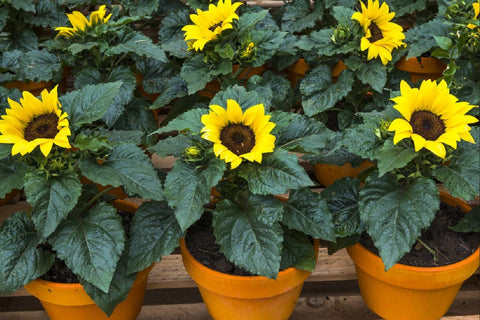Raised garden beds are an ideal choice, whether you want to grow vegetables, herbs or flowers. Filling flower beds is an important step in creating a healthy, fertile soil. This article will provide you with a detailed guide on how to fill a new raised garden flower bed.The following content also has some reference value for raised garden beds.
Section 1: Preparation
- Determine the size and shape of the flower bed: First, determine the size and shape of the flower bed you want. In general, the height of a raised garden bed should be between 8 and 12 inches, and the width and length can be determined according to your preference and site space.
- Determine the location of the flower bed: Choose a sunny and well-ventilated location so that the plant can fully absorb sunlight and air. Also, make sure there are no roots of large trees nearby that could affect the soil of the flower bed.
- Clean and prepare the bottom: Before filling the flower bed, remove weeds, sod, and other plants from the bottom. You can use a hoe or shovel to clean up thoroughly.
Section 2: Select the filling material
- Bottom filling material: Fill the bottom of the flower bed with some material to improve drainage performance and avoid excessive water accumulation. Coarse sand, gravel, or small stones can be used as the bottom fill material, with a thickness of approximately 2 to 3 inches.
- Fill the soil: On top of the bottom fill material, add high-quality fill soil. You can buy premixed garden soil or mix your own. An ideal flower bed soil mixture consists of three main components: soil, organic matter, and amendments.

Soil: The use of soil to provide the essential nutrients needed by plants and the structures that support plant roots. Make sure the soil is loose and rich in organic matter.
Organic matter: Add rotted compost, leaf litter, or other organic matter to provide additional nutrients, improve soil texture, and retain moisture.
- Amendments: Add some amendments to improve soil drainage and maintain soil fertility. Common amendments include vermiculite, perlite, humus, and decomposed animal feces. Mix these ingredients in proportion to get the right soil for your flower bed needs.
Section 3: Filling process
- Fill the bottom layer: Spread the bottom filling material evenly on the bottom of the flower bed to ensure good drainage. Fill with a spade or shovel and check that the fill is flat with a horizontal tool such as a shovel.
- Add filler soil: Pour the mixed filler soil evenly into the flower bed. Use a shovel or gloves to disperse the soil and make sure it's filled to the right height. Some space can be left for the subsequent addition of organic fertilizer or mulch.
- Level the surface: Use a spade or shovel to gently level the surface of the soil to ensure that the entire flower bed is flat and even.
- Hydrate the soil: After filling the flower bed, water the soil sufficiently to moisten it. This helps stabilize the soil and encourages plant growth.
Section 4: Additional considerations
- Add organic fertilizer: In order to further increase the fertility of the soil, you can add organic fertilizer after filling the flower bed. Organic fertilizers can be decomposed compost, piles of rotting leaves, decaying animal waste, etc. Spread the organic fertilizer evenly over the surface of the filled soil and mix gently.
- Mulch options: Consider using mulch to keep soil moist, reduce weed growth, and keep temperatures stable. Common mulches include organic garden film, wood chips, hay or ash. Mulch can be placed on the surface of the filled soil and leave room for plants.

Bottom line: Filling a new raised garden flower bed is an important step in providing a healthy growing environment for your plants. By choosing the right filling materials, mixing the right amount of soil, and adding organic fertilizer, you can create rich, fertile soil. Remember to water, fertilize and manage your flower beds regularly to ensure healthy plant growth and a bumper harvest. Good luck with your new raised garden bed!
Filling a new raised garden bed is an important step in providing a healthy environment for your plants to grow in. By choosing the right fill material, mixing the right amount of soil, and adding organic fertilizer, you can create rich, fertile soil that provides a good base for plant growth.
A successful raised garden bed will not only allow you to enjoy beautiful flowers and harvest vegetables, but also add fun and satisfaction to your gardening experience. Remember that filling a flower bed is not a one-time job, but an ongoing process. Regularly check the texture, moisture and nutrient status of the soil, and make appropriate adjustments and supplements as needed.
When planting plants in your new flower bed, set aside time to observe their growth and reaction. Bond with the plants, learn their needs, and water, fertilize, and prune as needed. As you interact with the garden, you will gradually develop your own gardening skills and knowledge.
Finally, raised garden beds not only provide you with a space to grow plants, but also create an opportunity for you to get closer to nature. Enjoy working in the flower bed, feel the texture of the soil, listen to the birds sing, and observe the busy insects. Let the flower bed be your place of communion with nature, bringing peace and joy.
May your new raised garden flower bed be full of life, thrive, and bring you a harvest and beautiful landscape. May you have fun and satisfaction in your journey of gardening and build a deep connection with nature. Start filling your flower bed and make your dream garden a reality!









